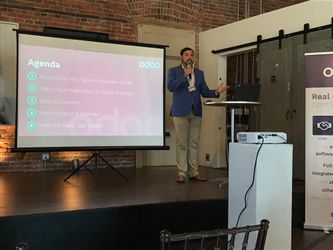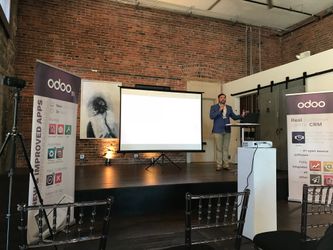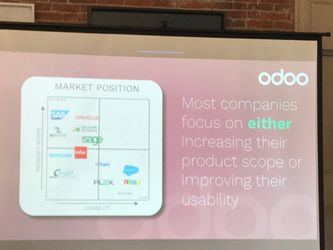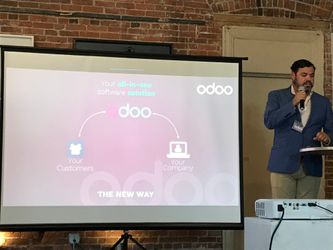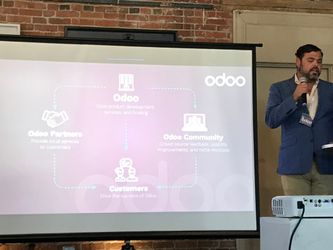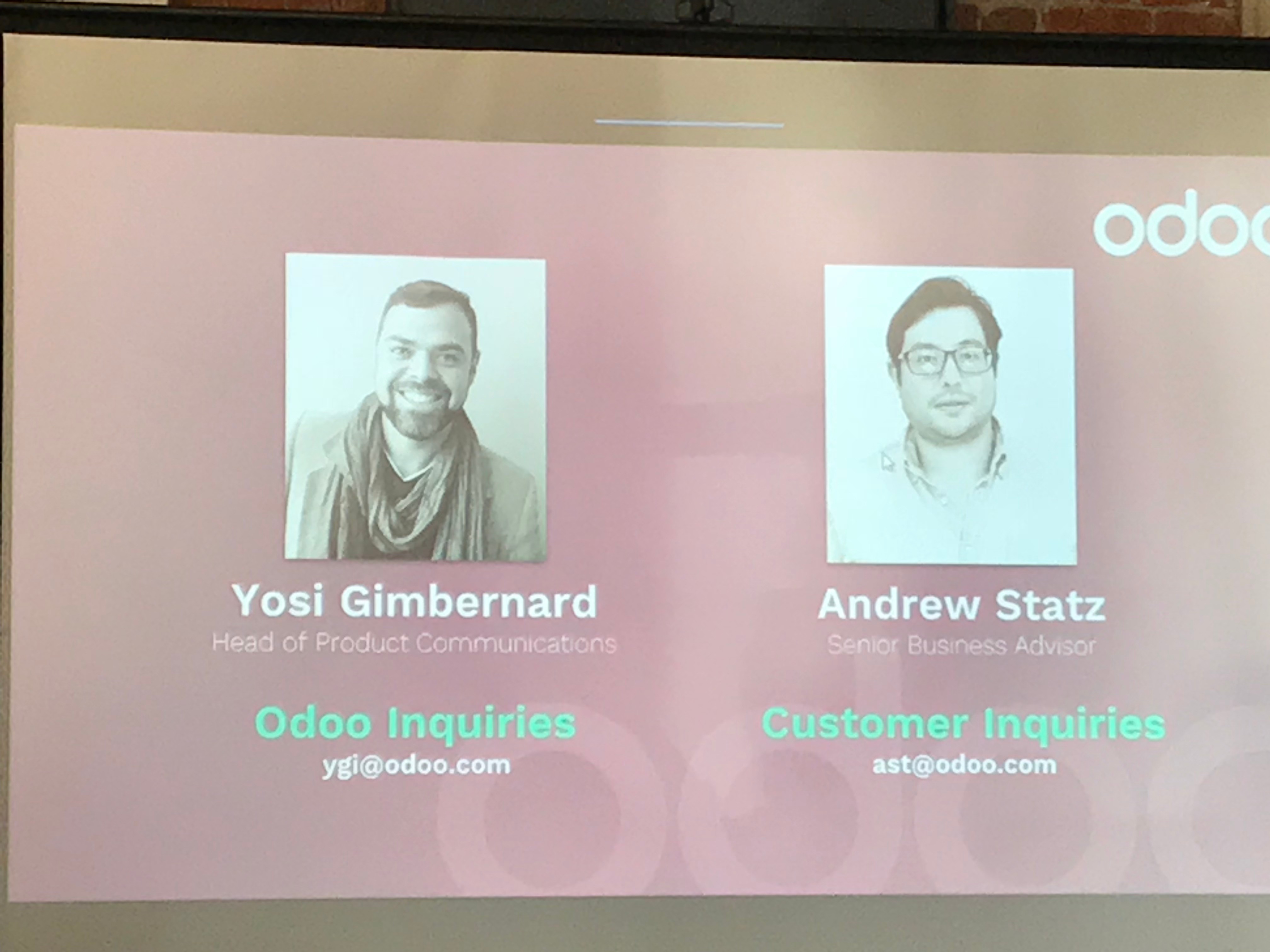Odoo 11 Tour Seattle
Brandon Bowersox-Johnson attended the Odoo 11 Tour Seattle event on July 26, 2018. The goal was to learn about Odoo 11 and whether it might serve as a Warehouse Management System (WMS) that is complementary to OpenLMIS and could be interoperable.
Key Points
Inventory/WMS Features
- supports multiple warehouses
- has a "Product Master Data" area to define products (see below about GS1)
- supports many different workflows that correspond with SCOR, although Odoo does not use SCOR terminology: "manufacture", "buy", "make to order", also "service products" which are hours of service/labor, "purchase orders" and "sales orders"
- has min and max thresholds for products
- keeps track of "reserved stock" when an order is going to use some of what is in inventory
- to conduct a physical inventory, you have to click into each product and change the current number on hand (see open question below)
- Open Questions:
- Does Odoo have streamlined inventory workflows (like an OpenLMIS "Physical Inventory" the user can fill out all on one screen)? It's not clear. There do not appear to be reasons/categories for adjustments or stock transactions.
- Does Odoo support sophisticated WMS features needed by global health national warehouses? EG, shelf locations, FEFO rules, proof-of-delivery, etc. Not clear.
- Could Odoo replace existing proprietary ERP/WMS solutions such as Epicor, SAGE, etc? Not clear.
- Andrew and Yosi described how Odoo sometimes does a "gap analysis" to help an organization evaluate if they could move to Odoo and what modules or customization, if any, might be needed. This does have a cost ($1500/day for an expert to come on-site), and other Partners offer this too.
GS1 and Barcoding
- Does Odoo 11 support GS1? Answer: Not sure. The Odoo staff present had not heard of GS1 and did not know. Looking at the "Product Master Data" area inside Odoo 11 admin screens, it was not apparent that GS1 support is there. Perhaps an add-on module or customization would be needed.
- Does Odoo 11 support barcoding and scanning? Answer: There is a "Barcode" application inside Odoo 11. However, it serves a different need. It allows users to define/create barcodes for tracking steps in the "Operations" app in Odoo. It does not seem to be designed for use with existing GS1-compliant barcodes on product packaging.
Mobile Support
- Android and iOS apps for Odoo 11 are optimized for both smartphones and tablets
- Open Questions:
- Do Odoo apps work well Offline? From the demos, it appears everything requires solid internet connectivity to use and interoperate.
Studio feature
The "Studio" feature within Odoo 11 offers powerful drag-n-drop ability to build forms and build Odoo apps:
- form builder - drag data fields into place, it provides a form view and list view of the data
- Open Question: Would this platform fill the needs of the "program data" feature OpenLMIS has been evaluating? Perhaps it is not a complete fit, but could provide inspiration for the drag-n-drop form building that would be ideal.
- design PDF print-outs, eg Packing Slips for shipments
Other Features
Odoo 11 does have an impressive family of deeply-integrated "apps" that have lots of interoperability with each other:
- Manufacturing: complex "routes" and steps to manufacture an item with CAD-like diagrams
- a "cost to manufacture" report shows costs of all the parts that go into a product
- Accounting: invoices, P&L, journaling
- Projects: Gantt chart views
- CRM: offers a pipeline for sales leads, much like Salesforce
- eSign: offers electronic signatures, like RightSignature or DocuSign
- Discuss: offers commenting features that integrate with email, sort of like Slack but built into the Odoo ecosystem
- Contacts: an address book
- Website: a website building/editing feature like Wix or SquareSpace (Web Content Management System)
- Reporting: simple report wizard with pivot tables
Odoo positions itself as having the same product scope as SAGE and Epicor, but having better usability. Odoo has a focus on selling to small organizations (with fewer than 100 users in the system). Odoo offers one integrated solution that can replace a patched-together collection of apps that most small organizations use to run their business, eg Quickbooks, a web CRM, a website platform, etc. "Don't use 10 or 20+ separate systems to run your business." "Integrated lots of different apps is the old, expensive way."
Open Source Community
Odoo has a commercial edition and community edition. Overall there are 16,000+ Odoo "apps" in their app store. It has a modular architecture the presenters described as "Legos" to create a complete, interlocking system.
- Odoo core is developed by a paid software team that also offers professional services, hosting, and runs the SAAS (Software-as-a-Service) subscription
- Odoo Community Association (OCA) is a lively non-profit that facilitates the open source community around Odoo
- OCA also hosts GitHub projects with many Odoo modules and translations/localizations at https://github.com/OCA
- Odoo has JSON APIs, so it allows interoperability, even though it is designed to be a one-system-does-everything solution
See photos about the community and partners:
Contact
For Odoo inquiries and potential integration/implementation/interoperability, see Yosi and Andrew contact info in the photo below:
Brandon Bowersox-Johnson also met Brian and Josh, an IT Manager and Software Developer from Sign Fracture Care International, based in Richland, WA. They are considering an adoption of Odoo for their organization to replace an old Epicor setup. They already have experience developing modules for Odoo using Python and XML. (Contact Brandon for their full contact info.)
See also: other Odoo pages in OpenLMIS wiki
Related content
OpenLMIS: the global initiative for powerful LMIS software
